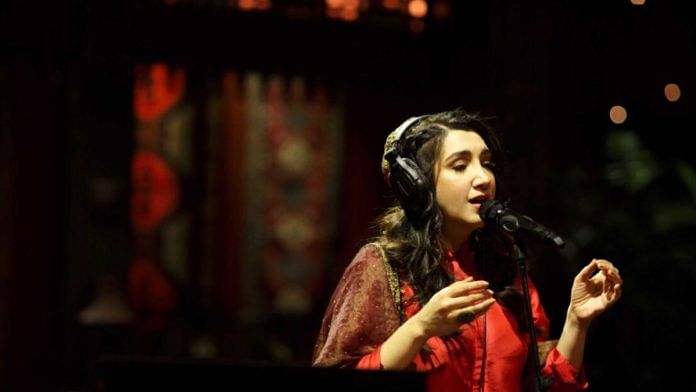A chance meeting between popular Pakistani singer-songwriter Zebunnisa Bangash and a lecturer from Johns Hopkins University has put the focus on the healing properties of a forgotten ‘Khayal’ style of Hindustani classical music. For 10 years, Bangash, who has lent her voice to hit songs in movies like Highway (2014), Fitoor (2016) and Madras Cafe (2013), has been training in Khayal under Guru Ustaad Naseeruddin Saami in Lahore.
Her decade-long musical journey has been one of self-discovery and healing, which she now wants to share with the world.
“What Ustaad Saami taught me was not just music. There was a larger process of healing through Khayal. I realised what I was being taught was a lineage of hundreds of years, and this music had spiritual tones,” said Bangash.
Saami comes from the Qawwal Bachchon ka Gharana or the Delhi Gharana founded by Amir Khusrau in the 13th Century, and is one of the last remaining stalwarts of Khayal. Some of Saami’s students are from India, and learn from him via online sessions on Zoom. What makes this style of singing different is that, as opposed to the Western musical scale’s 12 notes, there are 49 microtones in Khayal, resting between the 12 major notes.
“The healing tradition embedded within Khayal has been overshadowed in the past eight decades,” said Bangash, who was critically acclaimed for her music in Alankrita Shrivastava’s award-winning film, Lipstick Under My Burkha (2016).
She is thrilled to finally launch her project, ‘Healing Khayal’— a four-month-long residency where six people who have never learnt this form of music will train under Ustaad Saami. At the same time, Homayra Ziad from Johns Hopkins will investigate the effects of learning Khayal on the personal and cultural well-being of the cohort. The findings will be presented in a class on ancient music and religion at the university.
Also read:
How ‘Healing Khayal’ was born
Ziad and Bangash met in 2018 in New York, at a programme organised by the Doris Duke Foundation. Zeb was one of the featured artistes, and the two women hit it off almost instantly.
“We spoke at length about Khayal and its microtonal intricacies that have now, for the most part, been lost in practice but still remain in the work of Ustaad Saami,” said Bangash.
The two women started discussing their shared enthusiasm for exploring the healing properties of Khayal. The research interests of Ziad – who received her doctorate in religious studies from Yale University – span from Sufism, Qur’an interpretation and contemporary Islam in the United States to religion and the arts, among other related areas.
According to Bangash, the lecturer wanted to conduct an observational study around it. A chance to work together sparked interest and planted the seed.
“The Khayal is based on a microtonal system where they do not apply the 12-note system but employ the 49-note system within an octave. All these microtones are set to specific ragas and emotions for healing purposes,” said Bangash, who plans to take Healing Khayal to the US and countries in the Middle East to explore the intersection of this ancient form of music and healing.
Also read:
Making classical music global
Bangash gained fame for her folk-inspired fusion songs, Dilruba Na Raazi and Aaja Re Moray Saiyaan, which she performed for Coke Studio Pakistan in 2016. Both tracks have amassed millions of views on YouTube since, resonating with audiences on both sides of the border. But, interestingly, until she started training with Saami, she had no background in folk or classical music. She grew up listening to pop and Western music.
“I do not come from a musical family, and I found it very difficult to connect with a teacher initially, but then serendipitously, I was introduced to Ustaad Saami and started learning from him,” she said.
With every passing year, Bangash discovered that classical music was created for the “betterment of humankind”.
“But now, it has only become entertainment, or something that intimidates the listener. You go to classical music concerts, and you come out feeling intimidated. You don’t feel moved, connected and transformed,” she said.
The time is ripe for change. The global audience is slowly opening up to the idea of healing through music, frequencies, voice activation and similar other tools, she added.
The next step is to take Healing Khayal to different cities across the world.
“I would love to bring it to India. India is wonderful, and even Ustaad Sahab has received so much love from there.”
(Edited by Zoya Bhatti)



